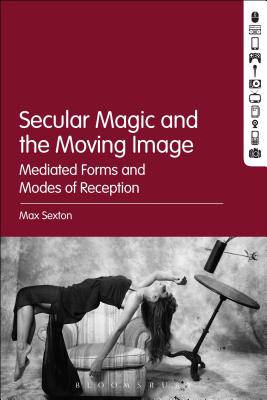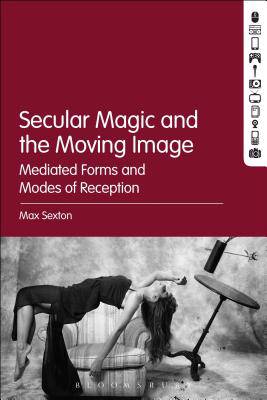
- Afhalen na 1 uur in een winkel met voorraad
- Gratis thuislevering in België vanaf € 30
- Ruim aanbod met 7 miljoen producten
- Afhalen na 1 uur in een winkel met voorraad
- Gratis thuislevering in België vanaf € 30
- Ruim aanbod met 7 miljoen producten
Zoeken
Secular Magic and the Moving Image
Mediated Forms and Modes of Reception
Max Sexton
Paperback | Engels
€ 79,95
+ 159 punten
Uitvoering
Omschrijving
The power of the moving image to conjure marvelous worlds has usually been to understand it in terms of 'move magic'. On film, a fascination for enchantment and wonder has transmuted older beliefs in the supernatural into secular attractions. But this study is not about the history of special effects or a history of magic. Rather, it attempts to determine the influence and status of secular magic on television within complex modes of delivery before discovering interstices with film. Historically, the overriding concern on television has been for secular magic that informs and empowers rather than a fairytale effect that deceives and mystifies. Yet, shifting notions of the real and the uncertainty associated with the contemporary world has led to television developing many different modes that have become capable of constant hybridization. The dynamic interplay between certainty and indeterminacy is the key to understanding secular magic on television and film and exploring the interstices between them. Sexton ranges from the real-time magic of street performers, such as David Blaine, Criss Angel, and Dynamo, to Penn and Teller's comedy magic, to the hypnotic acts of Derren Brown, before finally visiting the 2006 films The Illusionist and The Prestige. Each example charts how the lack of clear distinctions between reality and illusion in modes of representation and presentation disrupt older theoretical oppositions. Secular Magic and the Moving Image not only re-evaluates questions about modes and styles but raises further questions about entertainment and how the relations between the program maker and the audience resemble those between the conjuror and spectator. By re-thinking these overlapping practices and tensions and the marking of the indeterminacy of reality on media screens, it becomes possible to revise our understanding of inter-medial relations.
Specificaties
Betrokkenen
- Auteur(s):
- Uitgeverij:
Inhoud
- Aantal bladzijden:
- 192
- Taal:
- Engels
Eigenschappen
- Productcode (EAN):
- 9781501353895
- Verschijningsdatum:
- 27/06/2019
- Uitvoering:
- Paperback
- Formaat:
- Trade paperback (VS)
- Afmetingen:
- 152 mm x 229 mm
- Gewicht:
- 258 g

Alleen bij Standaard Boekhandel
+ 159 punten op je klantenkaart van Standaard Boekhandel
Beoordelingen
We publiceren alleen reviews die voldoen aan de voorwaarden voor reviews. Bekijk onze voorwaarden voor reviews.











